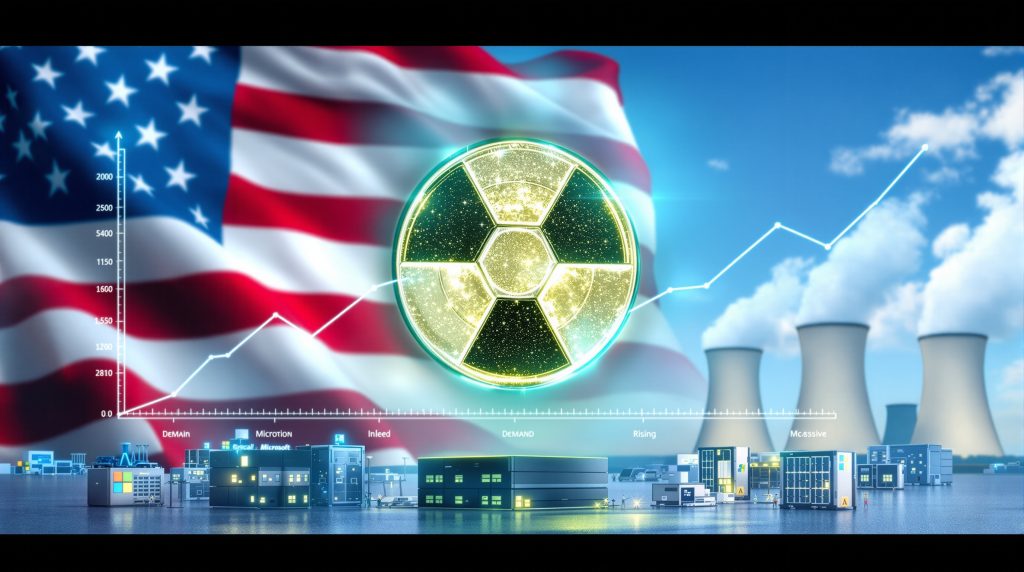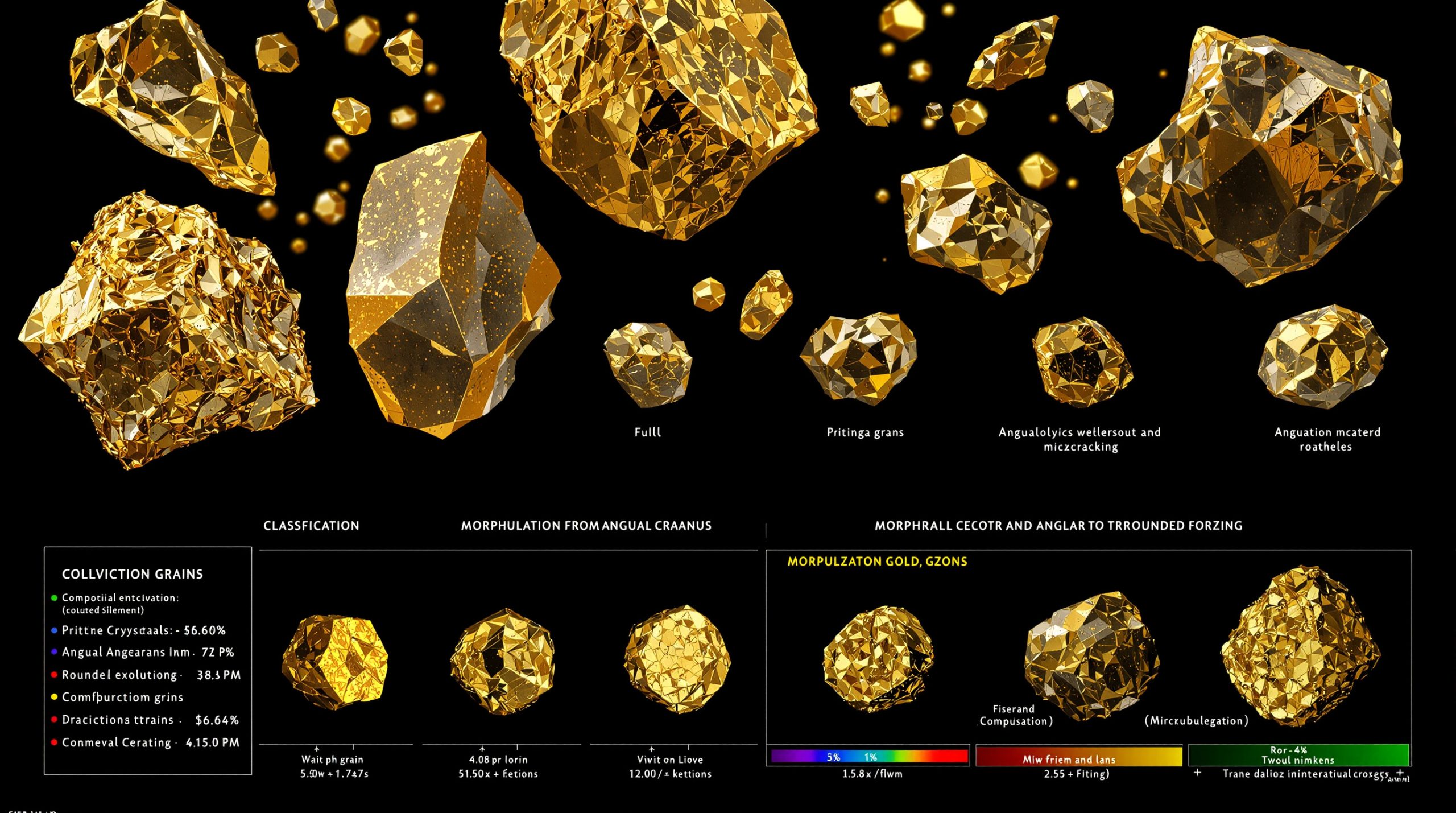Understanding America's Uranium Supply Deficit: Challenges and Solutions
The United States faces a critical shortage in uranium supply that threatens both energy security and economic stability. With domestic needs far outpacing production capabilities, the nation must confront a complex web of challenges ranging from geopolitical vulnerabilities to technical constraints. This article examines the causes of America's uranium supply deficit USA and explores potential solutions to this pressing national concern.
What is Causing the U.S. Uranium Supply Deficit?
The Scale of America's Uranium Dependency
American uranium consumption vastly exceeds domestic production capacity, creating a strategic vulnerability that impacts national energy security. U.S. nuclear utilities require approximately 50 million pounds of uranium annually, while domestic production capacity reaches only 4-5 million pounds at maximum output. This creates a staggering 45-46 million pound annual shortfall that must be filled through imports.
This dependency isn't simply a matter of convenience or cost-effectiveness—it represents a fundamental security challenge. When 90% of a critical energy resource must be sourced from abroad, the nation becomes vulnerable to supply disruptions, uranium market volatility, and geopolitical pressure from uranium-producing countries.
According to industry experts, this imbalance has been developing for decades but has reached a critical point as global competition for uranium resources intensifies and new demand drivers emerge.
Historical Context of Domestic Production Decline
American uranium production has experienced a dramatic decline from its historical peak, fundamentally altering the industry landscape. Several factors contributed to this downturn:
- Foreign competition: Lower-cost uranium from countries with less stringent regulatory requirements undercut American producers
- Post-Fukushima market collapse: The 2011 Fukushima nuclear disaster triggered a global uranium price decline that persisted for nearly a decade
- Investment drought: Sustained low uranium prices led to minimal exploration and development of new projects
- Infrastructure deterioration: Existing production facilities aged without adequate reinvestment in modernization
The consequences of this decline extend beyond mere production statistics. The American uranium sector has experienced dramatic workforce reductions, loss of technical expertise, and degradation of supporting infrastructure—creating barriers that make recovery particularly challenging even as uranium market trends improve.
Technical Capacity Constraints
The U.S. uranium industry's ability to scale production is severely limited by a 98% reduction in its technical workforce since the 1970s. This expertise gap represents perhaps the most significant barrier to revitalizing domestic capabilities.
Mining uranium requires specialized knowledge in geology, engineering, radiation safety, and processing technologies. When experienced workers retire without transferring knowledge to a new generation, the industry loses critical operational capabilities that cannot be quickly recovered.
Even with improved market conditions and increased government support, rebuilding this technical capacity will require years of targeted education, training programs, and on-the-job experience development. The technical constraint creates a practical ceiling on how quickly US uranium production can respond to market signals.
How Does the Global Uranium Market Impact U.S. Supply Security?
International Production Landscape
The global uranium market operates with a persistent supply deficit, with current production meeting only 80-90% of reactor demand worldwide. This shortfall has been temporarily masked by inventory drawdowns and secondary market sources that are rapidly depleting.
Major global producers are signaling further supply constraints:
- Kazakhstan's Kazatomprom (the world's largest uranium producer) has announced a 20% production reduction for 2025
- Several major mines are approaching the end of their productive life without equivalent replacement capacity
- Exploration and development of new uranium resources has lagged behind growing global demand
The international production landscape directly impacts U.S. supply security, as American utilities must compete in an increasingly tight global market to secure the 45+ million pounds of uranium they must import annually.
Geopolitical Supply Vulnerabilities
Uranium production concentration in politically sensitive regions creates strategic vulnerabilities for U.S. energy security. Recent developments highlight these risks:
- Political instability in Niger—home to some of Africa's highest-grade uranium deposits—demonstrates how quickly production regions can become inaccessible
- Russia's significant uranium production and enrichment capacity is increasingly subject to sanctions and trade restrictions
- Kazakhstan, the world's leading uranium producer, maintains close ties with both Russia and China
These geopolitical realities complicate America's uranium sourcing strategies and highlight the risks of continued heavy reliance on imported nuclear fuel. The concentration of production in a handful of countries gives these nations substantial leverage in international negotiations beyond just uranium markets.
Declining Ore Grades and Production Efficiency
Global uranium production faces fundamental geological challenges as many high-grade, easily accessible deposits have been depleted. Lower ore grades at major mines reduce production efficiency and increase extraction costs—a trend affecting multiple producing regions.
When uranium concentrations in ore decline, more material must be processed to yield the same amount of yellowcake (uranium concentrate). This increases energy consumption, water usage, and waste generation per pound of uranium produced. The economic implications are significant, with production costs rising even as many utilities operate with fixed-price long-term contracts negotiated in different market conditions.
These efficiency challenges contribute to the structural uranium supply deficit USA that affects U.S. uranium availability and highlight why simply increasing production from existing mines cannot fully resolve the supply gap.
What Role Do Development Timelines Play in the Supply Crisis?
Long Lead Times for New Production
Developing new uranium mines requires extraordinary patience—typically 10-15 years from initial exploration to commercial production. Even projects with established resources and preliminary permits typically need 5-7 years to complete feasibility studies, secure financing, obtain final permits, and construct production facilities.
This extended development timeline creates a fundamental disconnect in the uranium market:
- Price signals that would typically stimulate new production take years to translate into actual supply
- Current supply shortfalls reflect investment decisions (or lack thereof) made during the post-Fukushima price depression
- Utilities must secure fuel supplies years in advance, often before producers can guarantee new production
The prolonged development cycle means that addressing today's supply deficit requires investment decisions made a decade ago—a cycle that was disrupted by the extended uranium price downturn after 2011.
Capital Intensity Requirements
The financial demands of developing new uranium projects create another significant barrier to expanding supply. Full-cycle production costs for new uranium mines typically reach approximately $150 per pound—significantly higher than current spot prices of $60-80 per pound.
This economic reality creates several challenges:
- Project developers must convince investors to commit substantial capital based on projected future prices rather than current market conditions
- Financing often requires creditworthy customers willing to sign long-term contracts at prices that support development
- Capital intensity creates natural advantages for large, diversified mining companies or state-backed enterprises rather than smaller specialized uranium producers
The gap between production costs and market prices delays development decisions despite growing demand signals, as companies struggle to demonstrate compelling economics to potential investors.
Regulatory Approval Processes
The regulatory framework governing uranium mining in the United States adds considerable time and complexity to project development. Multiple overlapping jurisdictions and public consultation requirements can extend permitting timelines by years—even for projects with strong local support.
Key regulatory considerations include:
- Environmental impact assessments that must account for potential radiation exposure pathways
- Water rights and usage permits that face increasing scrutiny in drought-prone regions
- Land access agreements, particularly challenging for projects on federal lands or near indigenous territories
- Community engagement processes that require substantial investment in local relationships
While these regulatory safeguards serve important environmental and social purposes, they significantly extend the timeline from resource discovery to production, further exacerbating the supply deficit.
How Is Nuclear Energy Demand Evolving?
Traditional Utility Requirements
America's existing fleet of nuclear reactors provides approximately 20% of the nation's electricity from 92 operating units. These facilities form the backbone of baseload power generation in many regions and represent the largest source of carbon-free electricity in the United States.
Recent developments have increased uranium demand from this established base:
- Regulatory approvals for operating license extensions have prolonged the lifespan of many reactors
- Power uprates and efficiency improvements have increased the generating capacity of existing plants
- Several previously shuttered reactors have been restarted due to reliability concerns and climate goals
This traditional utility demand remains the primary driver of uranium consumption, requiring a steady, predictable fuel supply regardless of weather conditions or time of day—attributes that distinguish nuclear power from most renewable energy sources.
Emerging Data Center and AI Infrastructure Needs
A transformative shift is occurring as technology companies recognize nuclear power's potential for meeting the enormous energy demands of artificial intelligence infrastructure. This trend represents a potentially game-changing new source of uranium demand.
Major tech firms including Microsoft have joined the World Nuclear Association, signaling a strategic pivot toward nuclear energy. The connection between AI and nuclear power stems from several factors:
- AI data centers require enormous amounts of consistent, uninterrupted electricity
- Renewable sources alone cannot provide the reliability and energy density needed for large-scale computing operations
- Technology companies face increasing pressure to reduce carbon emissions while expanding computing capacity
This emerging demand driver could significantly alter long-term uranium consumption projections, as a single large AI data center can require electricity equivalent to a small city.
Small Modular Reactor Deployment
The development and deployment of small modular reactors (SMRs) represents another emerging factor in uranium demand forecasts. These advanced nuclear technologies offer several advantages over traditional large reactors:
- Standardized manufacturing rather than custom on-site construction
- Scalable deployment options suitable for smaller grids or industrial applications
- Enhanced passive safety features that reduce operational complexity
- Lower individual capital requirements that expand the potential customer base
As SMR designs move from concept to commercial deployment, they could accelerate nuclear capacity additions and corresponding uranium requirements. Their smaller size and modular nature may also open new markets for nuclear power that weren't economically viable for traditional large reactors.
What Government Initiatives Address the Supply Deficit?
Strategic Uranium Reserve Establishment
The U.S. government has initiated programs to establish a strategic uranium reserve, providing a domestic stockpile to buffer against supply disruptions. This initiative addresses immediate vulnerability while longer-term production capacity develops.
Key elements of this approach include:
- Direct purchases of domestically produced uranium to maintain minimum production capabilities
- Stockpile management protocols that balance commercial market impacts with security objectives
- Coordination with allied nations on complementary strategic reserves
While the strategic reserve doesn't directly solve the production deficit, it provides breathing room for implementing longer-term solutions while reducing immediate exposure to supply disruptions.
Critical Mineral Designation
The designation of uranium as a critical mineral by the U.S. government reflects its strategic importance to national security and economic prosperity. This classification enables additional policy support mechanisms and funding priorities.
Benefits of the critical mineral designation include:
- Eligibility for expedited permitting procedures for production projects
- Increased research funding for extraction technologies and alternative sources
- Federal coordination of supply chain security efforts across agencies
- International partnership opportunities focused on critical mineral security
This designation represents formal recognition of uranium's importance beyond just its energy applications, acknowledging its role in defense, medicine, and advanced technology applications.
Nuclear Power Expansion Targets
Government policies targeting a fourfold increase in nuclear energy capacity—aiming for 400 GW by 2050—signal long-term commitment to nuclear power as a cornerstone of America's clean energy transition. These ambitious goals create sustained demand signals for uranium producers considering new investments.
Supporting policies include:
- Production tax credits for existing nuclear plants to ensure continued operation
- Loan guarantees for new reactor construction to reduce financing costs
- Regulatory reforms to streamline licensing for new reactor designs
- Research funding for advanced nuclear technologies including SMRs
These expansion targets provide the policy certainty needed for long-term investments in uranium production capacity, though translating targets into actual built capacity remains challenging.
Which Projects Could Help Close the U.S. Supply Gap?
Domestic Production Restart Potential
Several U.S. uranium projects with existing infrastructure offer the potential for relatively rapid production restarts. These brownfield sites benefit from established permitting, reducing development timelines compared to greenfield projects.
Advantages of restart projects include:
- Existing processing facilities that can be refurbished rather than built from scratch
- Previously characterized ore bodies with well-understood geology
- Communities familiar with uranium mining and its economic benefits
- Workforce availability in regions with mining heritage
While restart projects cannot fully close the supply gap, they represent the fastest domestic production response, potentially delivering additional uranium to market within 2-3 years rather than the 5+ years required for new developments.
Advanced Development Projects
Projects in advanced development stages represent the next wave of potential uranium supply. These operations have completed significant permitting milestones and technical studies, positioning them to advance toward production decisions as market conditions improve.
Critical success factors for these projects include:
- Securing long-term contracts at prices that support development economics
- Finalizing remaining permits and addressing regulatory requirements
- Arranging project financing that may include government loan guarantees
- Establishing agreements with local communities and stakeholders
The timeline for these advanced projects typically ranges from 3-5 years from investment decision to first production, making them medium-term contributors to addressing the supply deficit.
International Strategic Partnerships
U.S. utilities and government agencies are establishing strategic partnerships with uranium producers in politically stable, allied nations. These arrangements aim to secure supply chains through direct investment, offtake agreements, and diplomatic coordination.
Key partnership approaches include:
- Joint development of new production facilities in countries with established mining frameworks
- Long-term supply contracts with producers in allied nations with significant uranium resources
- Investment in mining projects through government-backed development finance institutions
- Coordination of export controls and trade policies to prevent supply manipulation
These international partnerships recognize that even with expanded domestic production, the U.S. will continue to require significant uranium imports for the foreseeable future.
What Does the Future Hold for America's Uranium Supply?
Projected Supply-Demand Imbalance
Industry analysts project a potential one billion pound uranium deficit globally over the next 15 years, with the US uranium market disruption particularly exposed to this shortfall. Without significant new production capacity, this structural imbalance will likely persist and potentially worsen.
Contributing factors to the projected deficit include:
- Planned nuclear capacity additions in China, India, and other growing economies
- Extended operation of existing reactors in developed countries
- Emerging demand from non-traditional sectors including data centers
- Depleting secondary supplies from inventory drawdowns and HEU downblending
This imbalance suggests continued upward pressure on uranium prices and increasing competition for secure supply sources—a challenging environment for U.S. utilities accustomed to abundant fuel options.
Price Signals and Investment Response
Rising uranium prices serve as the primary market mechanism for stimulating new production. Current price trends suggest the beginning of a supply response, though the extended development timeline means that new production will lag behind price signals by several years.
The market's response follows a predictable pattern:
- Initial price increases trigger reactivation of idled capacity that can respond quickly
- Sustained higher prices justify development decisions for advanced projects
- Exploration activity increases as higher price expectations support earlier-stage projects
- Eventually, new supply moderates price increases, potentially creating cyclical patterns
This price-driven investment cycle, while functional over time, creates volatility and periodic mismatches between supply and demand due to the long development timelines involved.
Technological Innovation Opportunities
Technological innovations in uranium extraction, processing, and fuel fabrication offer potential pathways for enhancing production efficiency and reducing environmental impacts. These advancements could help accelerate development and improve economic viability for new uranium projects.
Promising innovation areas include:
- Advanced in-situ recovery techniques that minimize surface disturbance
- More efficient processing methods that reduce water and chemical usage
- Enhanced recovery technologies that make lower-grade resources economically viable
- Next-generation enrichment technologies that increase fuel yield from available uranium
While technological breakthroughs cannot immediately resolve the supply deficit, they may help flatten the cost curve for future production and expand the resource base available for development.
How Do Financing Mechanisms Support New Uranium Production?
Government Loan Guarantees
The U.S. Development Finance Corporation (DFC) provides loan guarantees for strategic energy projects, including uranium production facilities. These financing mechanisms reduce capital costs and project risks, helping bridge the economic gap for new developments.
Key elements of the loan guarantee approach include:
- Government backing that improves credit terms and reduces interest costs
- Typical structure requiring 40% equity from project developers and 60% loan facility
- Political risk coverage that particularly benefits international projects
- Strategic criteria that prioritize projects addressing critical supply chains
These loan guarantees can significantly improve project economics, particularly during the capital-intensive construction phase when projects have costs but no revenue.
Utility Offtake Agreements
Long-term contracts between uranium producers and U.S. utilities provide revenue certainty that supports project financing. These agreements typically cover 5-10 years of production, establishing stable cash flow projections that enhance investment attractiveness.
Benefits of offtake arrangements include:
- Predictable revenue streams that support debt service requirements
- Price mechanisms that may include floors and ceilings to share market risk
- Volume commitments that justify production scale decisions
- Potential for utility equity participation in projects supplying their fuel needs
The security provided by offtake agreements often represents the difference between a financeable project and one that cannot attract capital despite favorable geology.
International Financing Partnerships
Collaborative financing arrangements involving multiple governments and private sector partners distribute investment risks while advancing shared energy security objectives. These structures are particularly relevant for large-scale uranium projects requiring substantial capital deployment.
Successful partnership models include:
- Joint ventures between companies from different countries, combining technical and financial resources
- Multi-lateral development bank participation alongside commercial lenders
- Export credit agency support for equipment purchases and technical services
- Sovereign wealth fund investment in projects with strategic alignment
These international financing partnerships recognize the global nature of uranium markets and the shared interests of consuming nations in maintaining adequate supply.
What Are the Environmental Considerations in Uranium Production?
Modern Mining Techniques
Contemporary uranium mining employs advanced techniques that significantly reduce environmental impacts compared to historical practices. In-situ recovery methods, which now account for a substantial portion of global production, minimize surface disturbance and water consumption.
Key environmental advances include:
- Precise ore body mapping that reduces unnecessary excavation
- Closed-loop water systems that minimize consumption and prevent discharge
- Real-time monitoring of potential radiation and contaminant pathways
- Progressive site rehabilitation during rather than after operations
These modern approaches address many of the environmental concerns associated with uranium production, though public perception often remains influenced by legacy issues from earlier mining practices.
Regulatory Framework Evolution
Environmental regulations governing uranium production have evolved substantially, establishing comprehensive requirements for water protection, land reclamation, and radiation management. These standards ensure that modern operations maintain rigorous environmental safeguards.
Critical regulatory elements include:
- Baseline environmental studies required before mining commences
- Continuous monitoring throughout the operational phase
- Financial assurance mechanisms that guarantee funds for site restoration
- Post-closure monitoring requirements that may extend for decades
This regulatory framework provides significant environmental protection while adding to the complexity, timeline, and cost of developing new uranium projects.
Carbon Footprint Comparisons
The full lifecycle carbon emissions associated with nuclear power—including uranium mining, processing, and waste management—remain among the lowest of all electricity generation technologies. This environmental performance supports uranium's role in clean energy transitions despite production challenges.
Key carbon footprint considerations include:
- Energy intensity of uranium extraction varies significantly by mining method and ore grade
- Enrichment process historically represented the most energy-intensive step, though modern methods have improved efficiency
- Overall lifecycle emissions for nuclear power typically range from 5-10g CO2/kWh, similar to wind power
- Nuclear's low carbon intensity becomes increasingly valuable as electrical demand grows from transportation and building electrification
This favorable carbon profile reinforces nuclear power's role in addressing climate change concerns, even when accounting for the full uranium fuel cycle impacts.
How Can Investors Navigate the Uranium Supply Deficit?
Production-Stage Investment Opportunities
Companies with existing uranium production capacity offer direct exposure to current market conditions without the development risks associated with earlier-stage projects. These established producers typically benefit most immediately from rising uranium prices.
Investment considerations include:
- Production costs relative to current and projected uranium prices
- Contract portfolios and exposure to spot market pricing
- Operational flexibility to increase output as market conditions improve
- Balance sheet strength and ability to fund expansion without dilution
Producers represent the lowest-risk approach to uranium sector investment, though they may offer less upside potential than development-stage companies.
Development Pipeline Evaluation
Evaluating the uranium development pipeline requires careful assessment of project advancement timelines, financing arrangements, and regulatory progress. Projects with secured offtake agreements and clear paths to production represent potentially attractive investment opportunities as the supply deficit persists.
Critical evaluation factors include:
- Project economics at various uranium price points
- Permitting status and remaining regulatory hurdles
- Management team experience in bringing mines into production
- Financing strategy and potential dilution to achieve production
Development-stage companies offer greater potential returns but with correspondingly higher risk profiles and longer timelines to cash flow generation.
Strategic Metals Portfolio Diversification
Uranium represents one component of a broader strategic metals landscape essential to energy transition and national security objectives. Investors may consider uranium within a diversified portfolio approach to critical minerals exposure.
Portfolio construction considerations include:
- Correlation between uranium and other energy transition metals
- Geographic diversification across politically stable jurisdictions
- Balance between producing, developing, and exploration assets
- Exposure to various nuclear fuel cycle stages including enrichment and fabrication
This portfolio approach can help manage the volatility and policy risks associated with strategic metals while maintaining exposure to the structural supply deficits affecting multiple critical minerals.
FAQs About America's Uranium Supply Deficit
Why can't the U.S. quickly increase domestic uranium production?
Developing new uranium mines requires 5-10 years from advanced exploration to production due to several factors:
- Complex permitting processes involving multiple federal and state agencies
- Detailed technical studies including environmental impact assessments
- Financing arrangements requiring long-term contracts to justify investment
- Construction timelines for specialized processing facilities
Additionally, the U.S. uranium industry has experienced a 98% reduction in technical workforce since its peak, creating expertise constraints that further limit rapid expansion capabilities.
How does the uranium supply deficit affect national security?
America's dependence on imported uranium for 90% of its nuclear fuel requirements creates strategic vulnerabilities across multiple dimensions:
- Electric grid resilience depends on nuclear plants providing reliable baseload generation
- Military applications include naval propulsion systems that rely on highly enriched uranium fuel
- Medical isotope production requires consistent uranium supply for diagnostic and treatment procedures
- Nuclear deterrence capabilities require specialized uranium processing infrastructure
This multi-faceted dependency makes uranium supply security a critical national security concern beyond just energy considerations.
What role does uranium pricing play in addressing the supply deficit?
Uranium prices serve as the primary market signal for stimulating new production. Industry analysts estimate that sustainable production requires prices of approximately $150/lb (full-cycle costs), significantly higher than current spot prices of $60-80/lb.
This price gap delays investment decisions for new uranium projects despite the growing supply deficit. The disconnect between current prices and production economics reflects:
- Legacy contracts negotiated in different market conditions
- Inventory selling from utilities and traders
- Expectations of future price increases that haven't yet materialized to necessary levels
- Capital market hesitancy toward mining investments generally
Until pricing consistently supports new production economics, the uranium supply deficit USA will likely persist or worsen.
How do international developments affect America's uranium supply?
Global events significantly impact U.S. uranium availability, demonstrating the interconnected nature of uranium markets:
- Production cuts in Kazakhstan (reducing 2025 output by 20%) directly affect global supply balance
- Political instability in Niger affects mining operations in a region with significant high-grade deposits
- Sanctions limiting Russian uranium imports reduce supply options for U.S. utilities
- China's aggressive nuclear expansion program increases competition for available uranium
- Recent announcements of a Paladin uranium halt in Namibia further constrain global supply
These international developments compound America's domestic production challenges and highlight the importance of diversified supply strategies that include both domestic production and stable international partnerships.
What technologies might help address the uranium supply deficit?
Technological innovations could collectively help mitigate the supply deficit through various pathways:
- Advanced in-situ recovery techniques that can access deposits previously considered unrecoverable
- Enhanced uranium extraction methods that improve recovery rates from lower-grade ores
- Small modular reactor designs that improve fuel efficiency compared to traditional designs
- Uranium recovery from seawater represents a potential long-term solution, though commercial viability remains distant
While none of these technologies offers an immediate solution to the supply deficit, collectively they could expand the resource base and improve production economics over time.
Further Exploration
Readers interested in learning more about America's uranium supply challenges can explore related educational content offering additional perspectives on uranium market dynamics and investment opportunities in the nuclear fuel sector. Understanding the complex interplay of technical, economic, and geopolitical factors affecting uranium supply provides valuable context for evaluating both energy policy decisions and potential investment opportunities in this critical sector.
Are You Ready to Capitalise on the Next Mineral Discovery?
Stay ahead of the market with Discovery Alert's proprietary Discovery IQ model, which provides real-time notifications of significant ASX mineral discoveries, turning complex data into actionable insights. Explore why historic discoveries generate substantial returns by visiting Discovery Alert's dedicated discoveries page and begin your 30-day free trial today.




